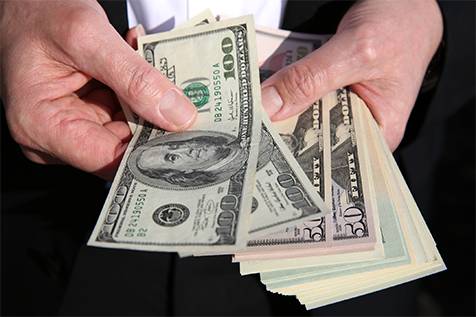The US dollar edged lower on Thursday morning, pulling back from a two-week high against major peers, as traders appeared largely unfazed by President Donald Trump’s newest round of tariff announcements.
As of 04:20 Eastern Time (08:20 GMT), the US Dollar Index—which measures the currency against a basket of six major rivals—was down 0.1% at 97.107, after hitting its highest level since June 25 during the previous session.
Trump Expands Tariff Campaign
President Trump once again stirred trade tensions by issuing new letters detailing tariff rates on imports from seven additional countries, adding to the 14 nations already notified earlier in the week.
He also confirmed a 50% tariff on imports from Brazil following a dispute with the country’s president and reiterated a similar tariff on copper imports, reinforcing earlier threats.
Despite the aggressive measures, currency markets remained largely steady—except for the Brazilian real—as traders continued to expect that deals with major economies such as India and the European Union could still be reached.
“The dollar is slightly offered this morning but remains largely on the sidelines amid the tariff chaos,” analysts at ING wrote in a note.
They added, “The question is, what would it take for the dollar to react meaningfully to Trump’s tariff maneuvers? We estimate the threshold remains high for now, but it may lower as we approach August 1. If there’s no tangible progress with key trading partners by then, it may become harder to ignore the tariff escalation.”
Economic Data Remains the Key Driver
ING emphasized that economic indicators—especially inflation and labor market data—continue to be the primary driver of dollar movements, particularly following the latest Federal Reserve minutes, which reaffirmed a cautious, hawkish-leaning stance from the FOMC.
Today’s focus will be on jobless claims, while next week’s Consumer Price Index (CPI) report is expected to have a more significant impact on currency markets than any trade headlines, ING said.
Euro Stable Amid Trade Deal Hopes
In Europe, the euro rose 0.1% against the dollar to 1.1731, as volatility in the single currency eased amid growing optimism for a trade agreement between the EU and the US.
European Trade Commissioner Maroš Šefčovič said Wednesday that good progress was being made on drafting a framework deal and that an agreement could be reached within days.
“Reports suggest that the draft EU proposal may include asymmetrical tariffs (likely a base rate of 10%), indicating a de-escalatory path,” ING noted. “This is likely already priced in, so unless there are major surprises in the details, EUR/USD may remain range-bound between 1.1700 and 1.1750 for now.”
British Pound Gains After Trade Pact
The British pound climbed 0.2% to 1.3608 after the United Kingdom signed a trade deal with the Trump administration, bolstering sterling sentiment.
Brazilian Real Plunges on Tariff Threat
In other currencies, the dollar dipped slightly against the Japanese yen to 146.29 and eased 0.1% against the Chinese yuan to 7.1775. Most Asian currencies held steady as investors processed the latest trade developments.
However, the US dollar surged 2.4% against the Brazilian real to 5.5766 after Trump vowed to impose a 50% tariff on all imports from Brazil.
Sources said the move was part of Trump’s angry response to what he perceives as mistreatment of his political ally, former Brazilian President Jair Bolsonaro.


